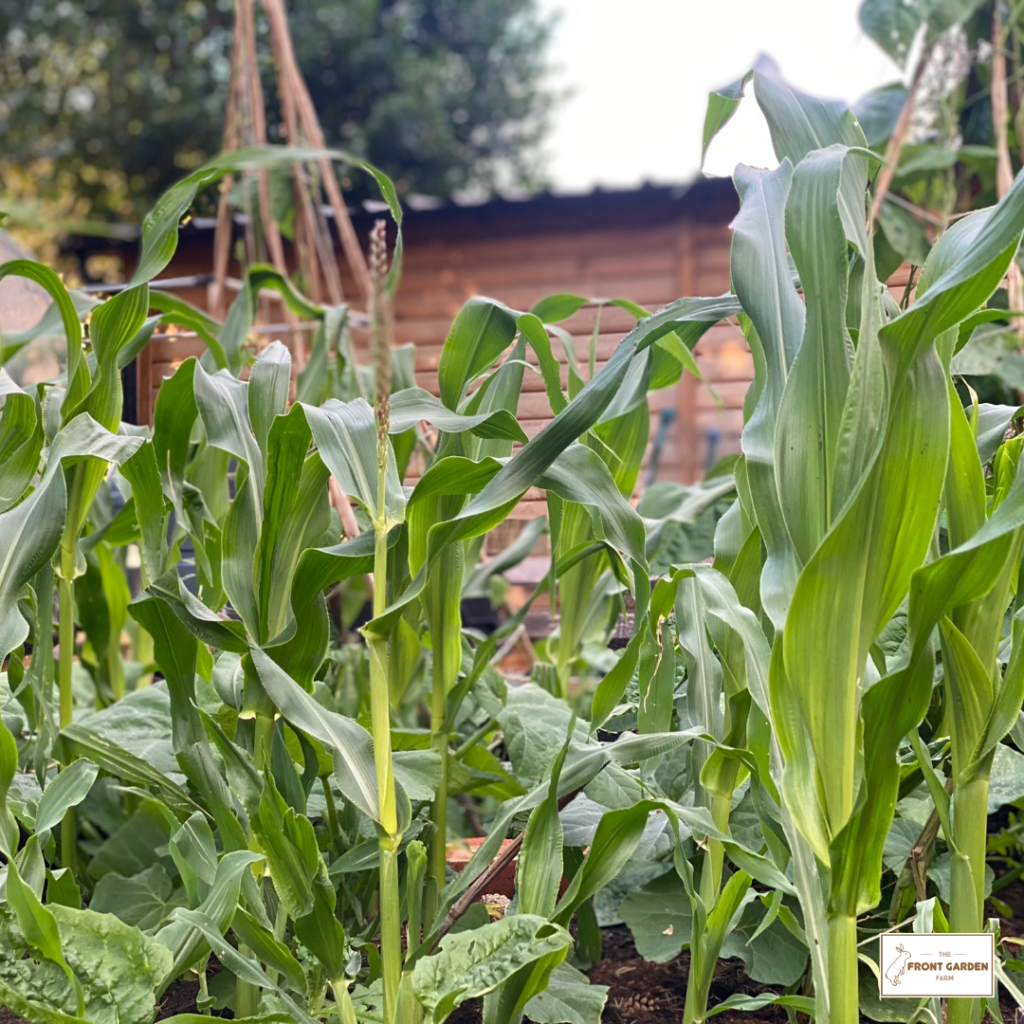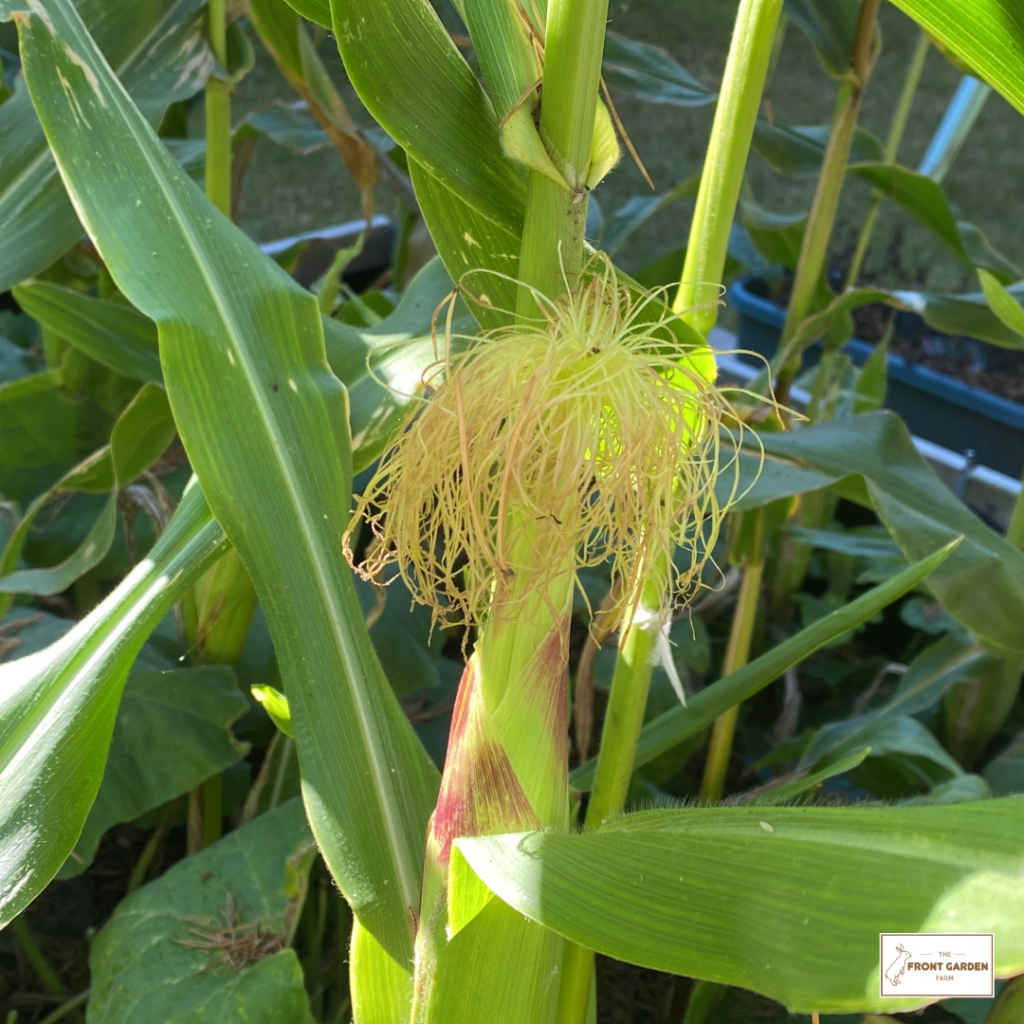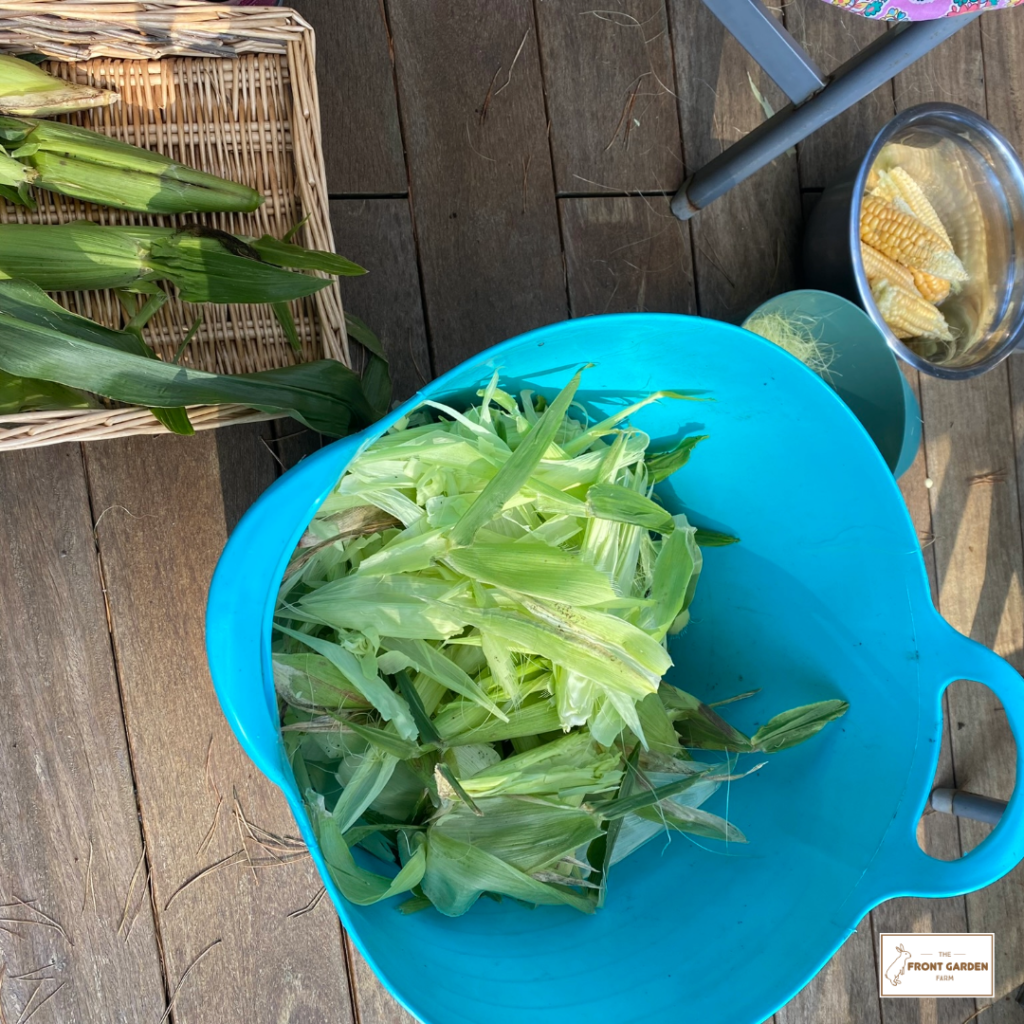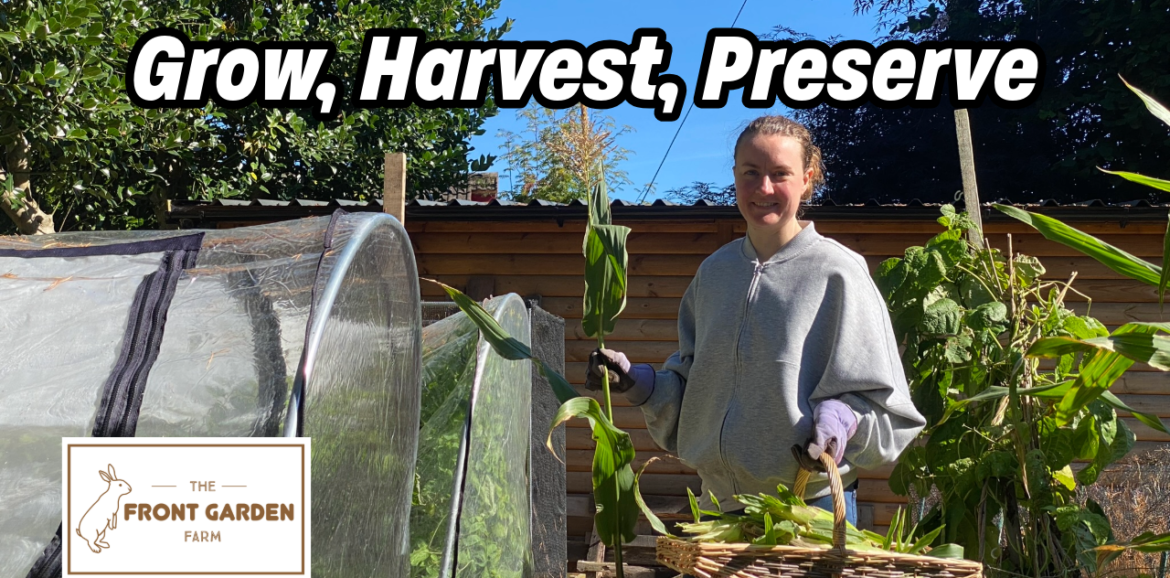How to Grow, Harvest and Preserve Sweetcorn
Hello there friends! I’m Hannah, and welcome to the Front Garden Farm where we love growing our own food in our front (and back) garden. This week, we harvested our sweetcorn, which inspired me to share our experiences with you about the process of growing corn and its various stages. Let’s dive in!

Types of Corn: Sweetcorn vs. Popcorn
When it comes to gardening, you might consider growing two main types of corn: sweetcorn and popcorn. While I’ll focus mostly on sweet corn today—since that’s what we’ve been working with this year—it’s interesting to note that popcorn differs in the way it is processed. Popcorn must be dried post-harvest for popping, and unlike sweet corn, it’s not palatable in its raw form.
Growing Season and Planting
Living in the West Midlands of the UK, our corn growing season spans from May to September. We often start our seeds indoors around April, moving the young plants to the greenhouse as the weather warms up in May. However, this year was a bit unconventional as unseasonably cold weather and numerous frosts delayed our planting until June! Because of this, we’re working with a shorter growing season than usual.
One important thing to note about sweetcorn is that it doesn’t like its roots disturbed. To overcome this challenge, we use plug trays that have fairly large holes at the bottom. When it’s time to transplant them, we can pop the plants out with minimal disruption. Alternatively, we’ve also utilized recycled materials like cardboard toilet roll tubes or newspaper pots filled with compost. This way, we can plant the entire thing directly into the ground, and as they decompose, they enrich the soil.
Planting Techniques for Optimal Pollination
Sweetcorn is wind-pollinated, meaning that planting them close together is key to successful pollination. We recommend consulting your seed packet for specific spacing requirements. In our garden, we plant in a zigzag formation to maximize pollination success. If any cob doesn’t get fully pollinated, it will yield baby corn, which can be harvested and enjoyed as well!
Understanding Pollination

Here’s a fun fact: the sweetcorn plant consists of a male and female part. The tassels at the top emit pollen that, when carried by the wind, lands on the silks of the female plant. Each silk corresponds to a potential kernel. If some of the cobs have parts that aren’t pollinated, don’t fret—you can still enjoy the baby corn!
Harvesting Sweetcorn: When is it Ready?
Knowing when to harvest sweetcorn is vital. Look for the silks at the top of the husk, which should turn brown and start to dry out. This is your cue to inspect the cobs. Gently peel back the husk and check the kernels. Press your thumbnail into a kernel. If it produces a clear liquid, it’s not quite ripe. A milky liquid indicates it’s time to harvest! However, if the liquid is very thick, it may be overripe, so act quickly.
When harvesting, you can expect at least one or two cobs per plant. After harvesting, you can compost the remains (a heads-up: they take a while to break down, so treat as brown material) or even save the stalks for crafting projects.
Making the Most of the Plant: Silks and Husks
Don’t throw away the silks! They possess medicinal properties and can be used for herbal teas. We’ve dried some of ours and found that they brew a lovely sweet corn-flavoured tea. Plus, we’re crafting an apple cider vinegar tincture from them, too! Corn silk is generally good for conditions pertaining to the urinary system, but of course check with your doctor before using herbs medicinally. As for the husks, consider drying them for decorations or crafting—who knew every part of the corn plant could be useful?
Preserving the Harvest

If your harvest is plentiful, you might want to consider long-term storage methods. Freezing is one of my personal favourites. Here’s how we do it:
1. Blanching: Boil the cobs in water for about five minutes. Then transfer them to a bowl of icy water to cool quickly.
2. Storage: You can freeze the cobs whole or cut off the kernels for easier storage—we opted for the latter this year due to limited freezer space.
Join the Conversation!
I hope this look into our sweetcorn journey has inspired your own gardening adventures. How do you grow and use corn? I’d love to hear your favourite recipes or tips in the comments below! If you found this information helpful, please subscribe to our blog and share it with friends to spread the love for home gardening!
That’s all for today; till next time, happy gardening! 🌽


